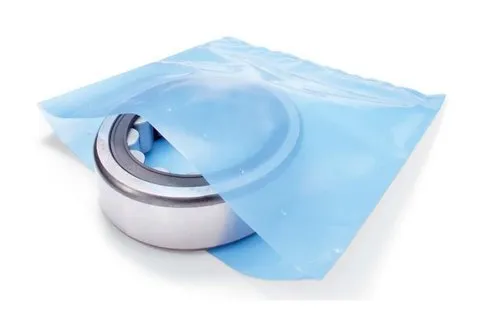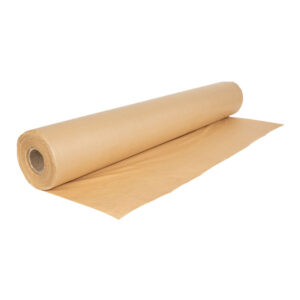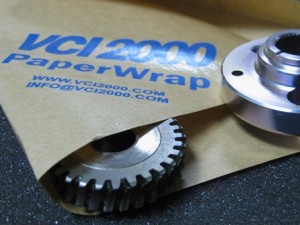Restoring historical artifacts and securing their legacy for future generations is an intricate and demanding undertaking. The relentless march of time, exposure to the elements, and often unfortunate neglect can transform cherished relics into little more than rusty remnants of their former splendor. However, in this modern age, we are fortunate to have at our disposal an array of invaluable tools and methods to breathe new life into these aging treasures. Among these, VCI packaging stands out as a key player in the realm of historic restoration, aiding in the preservation and revival of our bygone treasures.
Unmasking the Predicament of Rust and Corrosion
Rust and corrosion stand as perennial adversaries to historic artifacts and structures. When metals and various materials engage with environmental elements such as moisture, oxygen, and pollutants, they undergo chemical reactions that culminate in corrosion. This process not only compromises the structural integrity of these objects but also obliterates vital historical details, leaving us with narratives riddled with gaps.
Historical relics are particularly susceptible to these erosive processes. Whether they are antique weaponry, vintage automobiles, or architectural marvels that have endured the test of time, they frequently feature metal components vulnerable to rust and corrosion. The challenge of preserving these treasures hinges on the quest to arrest or decelerate these deleterious processes.
The Importance of Historic Artifacts
Historical artifacts serve as portals to the past, allowing us to bridge the chasm of time and gain a deeper insight into our history and culture. These relics encompass a wide spectrum, ranging from antique automobiles and vintage machinery to weapons, tools, and much more. Their preservation extends beyond mere sentimentality; it represents a steadfast commitment to safeguarding our cultural heritage.
Sadly, many of these artifacts fall prey to corrosion due to prolonged exposure to moisture, oxygen, and environmental pollutants over the years. This corrosion can inflict substantial damage, rendering the restoration process intricate and financially taxing. This is where VCI packaging takes center stage.
Unraveling the Secrets of VCI Packaging
Volatile Corrosion Inhibitor VCI packaging represents a groundbreaking approach to safeguarding metal artifacts against the clutches of corrosion. At its core, VCI packaging relies on the principles of vapor phase corrosion inhibitors. These inhibitors are compounds that, when introduced into the surrounding environment, generate a protective layer on the surface of the metal. This invisible shield acts as a barrier, thwarting the ingress of moisture and oxygen that could otherwise lead to corrosion.
Typically, VCI packaging takes the form of specialized materials, including papers, films, and emitters. These materials are meticulously designed to release VCI molecules into the surrounding airspace, creating an environment resistant to corrosion for the enclosed metal items.
VCI Packaging in the Context of Historic Restoration
The application of VCI packaging in historic restoration constitutes a transformative development, offering several pivotal advantages that make it an indispensable asset in the conservation and restoration of historical artifacts.
-
Corrosion Mitigation
Foremost among the merits of VCI packaging is its prowess in averting corrosion. When historic artifacts are lovingly swathed or ensconced within VCI packaging, the vapor phase corrosion inhibitors initiate the creation of a protective cocoon around the metal surfaces. This cocoon serves as a staunch deterrent to the insidious process of oxidation, effectively halting any further corrosion and preserving the artifact’s structural integrity.
-
Non-Invasive Preservation
In contrast to traditional restoration techniques that often necessitate abrasive cleaning and the removal of valuable patina, VCI packaging is an eminently gentle approach. It allows for the preservation of an artifact’s original appearance, including any rust and patina that may contribute to its historical worth. This facet is of utmost importance for collectors and museums intent on maintaining the authenticity of their cherished relics.
-
Long-Term Safeguarding
VCI packaging ensures the enduring protection of historical artifacts. Once properly cocooned, these items can be safely stored for extended durations without the need for relentless vigilance and maintenance. This is particularly crucial for artifacts that await their turn for restoration, guaranteeing they remain in a stable state until the restoration process commences.
-
Cost-Effective Preservation
Historic restoration projects are often accompanied by substantial costs, and a significant portion of these expenditures is directed toward the removal of corrosion and the associated repairs. VCI packaging significantly reduces these costs by minimizing the necessity for extensive corrosion remediation and repair. It represents a cost-efficient solution that caters to the budgetary constraints of both individual collectors and institutions.
-
Eco-Friendly Approach
In an era marked by a heightened awareness of environmental concerns and sustainability, VCI packaging steps in as an eco-friendly solution for corrosion prevention. It eliminates the need for the use of harsh chemicals and abrasive cleaning procedures, thus mitigating the environmental impact of restoration endeavors.
-
Versatility Unleashed
VCI packaging knows no bounds when it comes to the types of artifacts or metals it can protect. It can be effectively employed for a diverse array of materials, spanning from iron, steel, copper, to bronze, and beyond. This versatility renders it a versatile tool in the hands of restorers and collectors tasked with curating an eclectic array of historical artifacts.
The Restoration Odyssey with VCI Packaging
The inclusion of VCI packaging within the ambit of historic artifact restoration typically involves a series of meticulous steps:
-
Assessment
The journey begins with a thorough assessment of the artifact’s condition. This includes a painstaking examination of the extent of corrosion, the identification of any structural damage, and an overall evaluation of the artifact’s state.
-
Gentle Cleansing
Before the application of VCI packaging, the artifact may undergo a gentle cleansing process. This cleaning regimen is minimally invasive, aimed at expunging superficial dirt and contaminants while preserving the artifact’s existing patina.
-
Enveloped in VCI Packaging
Once the assessment and cleaning phases are complete, the artifact is lovingly wrapped or enclosed in materials specifically tailored for VCI packaging. The selection of these materials is contingent upon the unique needs of the artifact and the intended duration of protection.
-
Safekeeping in Ideal Conditions
The encapsulated artifact is then safely ensconced within a controlled environment. Temperature and humidity levels are vigilantly monitored to ensure the artifact’s continued preservation.
-
Restoration in Tranquility
With the artifact securely cocooned in VCI packaging, the restoration process can proceed at a pace befitting the collector or institution. The non-invasive nature of VCI packaging bestows the restorers with the freedom to concentrate on the intricate minutiae of restoration, devoid of the relentless pressure stemming from the rapid progression of corrosion.
-
Resplendent on Display
Upon the completion of the restoration journey, the historic artifact can once again be showcased for public viewing, underscoring its historical and cultural significance for generations to come.
The Future of Historic Restoration with VCI Packaging
VCI packaging has spearheaded a revolution within the sphere of historic restoration, presenting a sustainable, non-invasive, and cost-effective solution for the preservation of our cultural heritage. As technology advances ceaselessly, we can anticipate even more sophisticated VCI packaging solutions that cater to the specific needs of individual artifacts.
The stewardship of historical artifacts isn’t solely the responsibility of collectors and museums; it’s a shared obligation to preserve our history and culture. VCI packaging emerges as a potent ally in this collective endeavor, ensuring that rusty relics are not consigned to oblivion but rather revived and maintained as vibrant testaments to our past.
In closing, historic restoration represents a paramount undertaking, affording us the opportunity to traverse time’s tapestry and safeguard our cultural heritage. VCI packaging has emerged as an indispensable tool in this realm, providing corrosion protection, non-invasive preservation, cost-effectiveness, and ecological responsibility. With the embrace of VCI packaging, we breathe new life into rusty relics, ensuring they continue to inspire and educate the generations yet to come.






